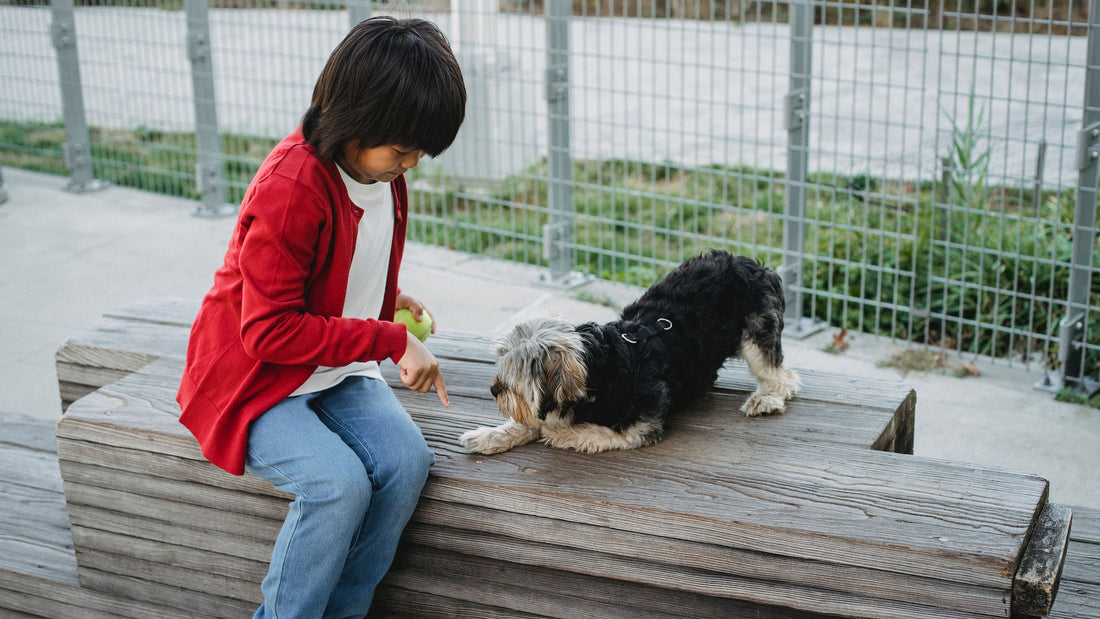You've probably been in a situation where you've had to leave your dog home alone, and they just couldn't seem to stay put. Maybe they followed you to the door and whined as you left, or maybe they tore up the house while you were gone. Either way, it's important to train your dog to stay so that they know how to behave when you're not around. With a little patience and some positive reinforcement, you can teach your dog to stay put no matter what. Read on for tips on how to train your dog to stay!
Start with basic obedience commands.
Dogs need to learn basic obedience commands before they can learn more complex tricks. Start with commands like sit, stay, come, and down. Once your dog has mastered these commands, you can begin to teach them more complex tricks. To train your dog to stay, start by having them sit or lie down. Then, give them a treat and back away slowly. If they get up, give them a verbal cue like “no” and put them back in the starting position. Once they stay put for a few seconds, give them another treat and increase the amount of time you back away slowly. With patience and practice, your dog will learn to stay.
Make sure your dog is well-exercised.
A dog who is well-exercised is more likely to be calm and relaxed, and therefore more likely to obey commands. Take your dog for a long walk or run before you begin training, so that he is tired and not as likely to be distracted. Once you are ready to start training, give the command "stay" in a firm voice, and then back away from your dog. If he stays put, praise him and give him a treat. If he does not stay, try again. Be patient and consistent, and eventually your dog will learn the command.
Use positive reinforcement techniques.
A good way to train your dog to stay is to use positive reinforcement techniques. This means rewarding your dog when he or she does something you want, such as staying in one spot. You can use treats, petting, or verbal praise as rewards. When you first start training, it's important to make sure that your dog is in a quiet place with few distractions. Once your dog is able to stay in one spot for a short period of time, you can gradually increase the amount of time you expect him or her to stay.
Be consistent with your commands.
Dogs are creatures of habit and they respond well to consistency. When you are training your dog to stay, use the same word or phrase each time. For example, say "stay" each time you want your dog to stay. If you use different words, such as "stay" and "sit," your dog will get confused. Be consistent with your body language as well. If you want your dog to stay, make sure you are standing still and not moving towards him.
Practice in different environments.
Once your dog has the basic concept of "stay" down, you'll need to practice in different environments. This will help your dog learn that the command applies no matter where you are or what's going on around you. Start by practicing in a quiet room with few distractions. Once your dog can stay in that environment, move on to somewhere with more distractions, like a park or your backyard. Finally, practice in places where there are lots of people and animals around. Remember to praise your dog and give treats whenever he stays, no matter where you are.
What if your dog wonders away?
If you're training your dog to stay, it's important to be consistent with your commands. Make sure you use the same word or phrase each time, and be firm but gentle with your dog. You can also use treats to reward your dog for staying in one place. If your dog does wander off, don't punish them. Simply bring them back to the spot where you want them to stay and try again. With patience and practice, your dog will learn to stay put.
Make sure you have a personalized ID tag in case your dog gets lost.
A personalized ID tag is one of the most important things you can get for your dog. If your dog ever gets lost, the ID tag will help to ensure that he or she is returned to you quickly and safely. The ID tag should include your name and phone number. You can also include your email address or other contact information. If you have more than one phone number, it is a good idea to list all of them so that whoever finds your dog can reach you no matter what.
Check out our Personalized Dog ID Tags and keep your beloved pets safe!

